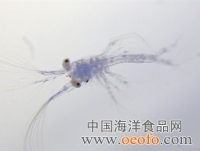|
|
| 从昆虫卵内孵化出来的幼小生物体,形态跟长成的昆虫不同。 |
|
 幼虫 概述 幼虫 概述
极少数脊椎动物、尾索动物和很多门类无脊椎动物的个体发育都历经幼虫阶段。有的只有一个幼虫期,如异纽形动物的帽状幼虫,外肛动物的后湾幼虫和海鞘的蝌蚪幼虫。有些动物的个体发育中含有多个幼虫期;如角贝有两个幼虫期:担轮幼虫和面盘幼虫,假叶类绦虫有3个幼虫期:钩球幼虫、原尾幼虫和全尾幼虫;海参有4个幼虫期:原肠胚式早期幼虫、耳状幼虫、桶形幼虫和五放幼虫;而贻贝的幼虫竟可细分为5期:担轮幼虫、面盘幼虫、胚壳面盘幼虫、具眼点面盘幼虫和匍足面盘幼虫。节肢动物,幼虫的分期数与其蜕皮的次数有关。昆虫胚壳中若虫在各次蜕皮后的时期称为龄虫。如蝗虫就有5个龄虫期,另有的昆虫如蜉蝣在环境影响下可有不同龄虫期,少者5个,多者可达27个。
从进化的角度来看,幼虫是物种从所属门类走向独自发展道路中的一种创造。有人将所有动物幼虫归纳为两类:早期幼虫和晚期幼虫。早期幼虫又称种系幼虫,如双囊幼虫、帽状幼虫、辐轮幼虫和担轮幼虫等。这些幼虫的某些形态在所属门类中具有一定共性和基础性。例如寡毛类也有与多毛类担轮幼虫相似的发育期。与此相反,晚期幼虫在同门内不同种间出现的形态差别甚至不亚于成体间差别。水母、吸蛭、绦虫、甲壳和棘皮等类动物的幼虫均属晚期幼虫。
经幼虫发育为成体的经历称为变态。在有几个幼虫期的情形下,每次形态变化都与生活方式的改变有密切联系。海月水母的有性世代幼虫和无性世代幼虫出现于不同季节并分别营浮游生活和附着生活。其浮浪幼虫附着后先形成螅状幼虫,再发育为代表水螅体世代的杯状体,此后便是由杯状体向水母体世代的过渡。这时杯状体节裂为叠盘体,由后者的自由端依次脱落下来的再一期幼虫为碟状体。经过浮游生活期后,碟状体长大为成体动物。海月水母两个世代成体和所有幼虫期虽基因型相同,但表型不同,以致形态各异。
幼虫变态的结果一般是产生体形很小的成体型个体,是称幼体。不过,在有些动物的个体发育中,从幼虫到幼体之间还要经过一个过渡期,即后幼虫期。这方面例子很多,如吸蛭的后摇尾幼虫,贻贝的行幼体,樱虾的长眼柄幼体,毛虾的仔虾期和蟹类的大眼幼体等。后幼虫期的特点在:虽然大多数成体器官已经生出,只是尚未达到成体的大小和比例。此外,某些幼虫器官的残迹或某些幼虫生态表现依然存在。 |
研究历史 The study of history |
我国历史上,最早被认识的幼虫是家蚕。在公元前16~前12世纪间中国的殷代,蚕的形态即被刻绘在龟甲上并出现了象形文的“蚕”字。在西方,17世纪末叶a.van列文虎克发现刚孵出的剑水蚤大异于成体,后经德耶尔研究始证实为幼虫。有些十足类动物幼虫如水蚤幼虫和大眼幼体虽在18世纪80年代已被发现,但到19世纪初仍都被当成成体动物,直到19世纪30年代才得到改正。
1832年c.g.埃伦贝格发现后湾幼虫并于1834年定名,当时把它当成一种轮形动物,直到1869年始由a.施奈德证实为外肛动物幼虫。j.p.弥勒于1846年发现支架幼虫,1847年发现帽状幼虫,1848年发现辐轮幼虫,1850年发现旋轮幼虫并分别予以命名。其中辐轮幼虫和支架幼虫最初也误为成体动物,j.p.弥勒本人证实支架幼虫实为蛇尾动物幼虫,另由c.格根鲍尔确定辐轮幼虫为帚虫幼虫。1840年s.罗文首先发现在演化上具重要地位的担轮幼虫,初定名为罗文幼虫,后一度改名球轮幼虫,到1878年始由b.哈切克改为现名。
到19世纪末,大多数门类中常见有代表性的及形态较特殊的幼虫已有记载如:樽海绵的两囊幼虫;白枝海绵的中实幼虫;腔肠动物中的浮浪幼虫;多肠类的弥勒氏幼虫和格特氏幼虫;吸蛭类的纤毛幼虫、雷迪氏幼虫和摇尾幼虫;绦虫的六钩幼虫和囊尾幼虫;纽形动物的德沙氏幼虫;多毛类中的便帽幼虫;腕足类中的伞形幼虫;还有某些昆虫类的幼虫;甲壳类幼虫以及棘皮动物中的羽腕幼虫和肢腕幼虫等。
c.r.达尔文的物种起源学说对认识和解释幼虫生成的因果和意义有很大影响,导致不少著名胚胎学家利用幼虫形态发生过程来说明物种演化历史和不同类动物间的亲缘关系,推动了比较胚胎学的发展。
一方面由于受到个体发育与系统发育关系学说的影响,另一方面由于众多相似形态幼虫的发现,b.哈切克于1878年提出了担轮幼虫说。认为担轮幼虫是一种祖体动物——担轮动物(trochozoon)留下的“活化石”。他认为几乎所有现存对称动物(bilateria)都来源于这一假想的祖先。1952年b.h.别克列米舍夫将担轮动物列为一个总门,可说是担轮幼虫说的继承和发展。环节、软体、螠虫和星虫都归于该总门之下,同时它们的幼虫也统称为担轮幼虫。
至20世纪中叶,l.h.海曼在提出动物界谱系关系时,仍然把担轮幼虫式祖先当成是螠虫、星虫、帚虫、外肛、环节、软体和节肢等多门动物的起始形态。她还把浮浪幼虫式祖体作为整个动物界谱系树的基干,认为所有真后生动物(eumetazoa)都是从该祖体形态基础上发展而成。j.哈吉则认为多种动物幼虫的形态相似实际上可能是在生活环境需要下出现的同功现象。如幼虫的陀螺形或锥形体制以及顶感觉器和纤毛环的生成都与水环境和地引力有关,但这种相似又掩盖不了它们各自独有形态特点。如环节动物担轮幼虫与软体动物担轮幼虫最为相似,但它们之间的演化关系所达何种深度很值得加以研究。至少有一个重要差别:环节动物担轮幼虫中胚层从发生之始就未脱离过与体节生成的联系,而在软体动物担轮幼虫期中胚层的发生却从未有过分节的迹象。
20世纪上半叶之前,关于动物幼虫的研究只不过是比较胚胎学和进化胚胎学的一个组成部分。至1950年g.图尔松首先提出幼虫生态学研究方向,并且把海洋幼虫分为两个生态类群:黄养浮游幼虫和浮养浮游幼虫。1972年c.a.米列伊科夫斯基又将海洋幼虫升格为海洋生物中一个独特的生态类群——海洋幼虫生物(pelegiclarvaton),并把它与底栖生物(benthos)、自游动物(nec-ton)、水漂生物(pleuston)和浮游生物(plankton)等并列。
与幼虫生态学发展的同时,兴起了幼虫分类学。后者内容是将同一门类中幼虫分为若干类型,二是利用幼虫形态来鉴定其所属成体种类。如宫崎一老1962年根据壳的形态和特征将200多种瓣鳃类面盘幼虫归纳为贻贝、牡蛎、帘蛤和竹蛏等20个类型。r.h.米勒主要根据附着器形态、幼虫已否携带成体原基以及芽生体出生情形等将海鞘蝌蚪幼虫分为28个类型。
在利用幼虫形态鉴定所属成体种类的工作中,k.w.奥克尔曼曾用瓣鳃类后幼虫期的壳顶形态来推测第1期幼虫壳(或胚壳Ⅰ)和第2期幼虫壳(或胚壳Ⅱ)生成中的形态变化,并将之作前后比较而推知所属成体种类。v.l.罗森诺夫等人则依据面盘幼虫壳的轮廓、壳顶鼓起程度、壳的长高比例和壳前后缘宽狭以及韧带位置和铰链形状等条件鉴定出了20种北美瓣鳃动物。通过对3000多篇文献的归纳,1982年d.e.布利斯制定了3个甲壳类动物方面的检索表,即:用胚胎期附肢形态以分出各期幼虫和幼体的检索表;用无节幼虫附肢和背甲形态分出甲壳类主要亚纲的检索表和用溞状幼虫形态分出甲壳类的属、目、亚目或亚科的检索表。1978年m.j.韦斯特福尔除作出蜻蜒目成体和若虫的检索表外还作了鉴定和区分蜻蜒若虫与蜻蛉若虫的检索表。 |
|
幼虫模式与胚胎发育模式相一致,动物幼虫可分为:①处于囊胚状水平的幼虫,在结构上系由单层细胞围成,尚无胚层之分,如海绵动物的双囊幼虫。②由两胚层组成的幼虫,如浮浪幼虫,它是由围在体表的外胚层和居于虫体内部的细胞团组成,既无内腔,亦无开孔。n.n.梅契尼科夫称这种幼虫为中实幼虫,亦出现于海绵动物中。此内细胞团并不完全相当于消化道原基,即不等同于内胚层而颇近似内中胚层。③无体腔的三胚层幼虫,如多肠类的弥勒氏幼虫和吸蛭类幼虫;弥勒氏幼虫在发生之始一度存在腔隙(囊胚腔),但不久因间叶细胞的填充和消化器官分枝的增加而消失。吸蛭幼虫体内填充物除实质外还有大量生殖细胞和生殖细胞团。④具有假体腔的三胚层幼虫,如环节、星虫和软体等类动物的担轮幼虫,纽虫的帽状幼虫,内肛动物幼虫和后湾幼虫。它们都以单层外胚层细胞组成体壁,在体内生有简单消化道。居于体壁与消化道之间的腔隙即假体腔。此腔实际上是存留下来的囊胚腔。此类幼虫的运动器官主要是环形纤毛轮,位于幼虫口之前者称口前纤毛轮:位于口缘外围者多称纤毛冠。⑤具真体腔囊的三胚层幼虫,如腕足类幼虫、棘皮动物幼虫和柱头幼虫。这些幼虫的体腔囊都是由原肠腔外突部分形成的囊状构造。这种体腔囊不但分居幼虫消化道左右两侧,而且各分为前、中、后3部分。其中后部体腔是成体干腔发生的基?4送猓罅嚼喽镉壮娴脑硕鞴俣疾皇窍嗣侄潜砻嫔邢嗣耐蟆?
在演化历史进程中,幼虫为适应环境需要,为使营养获得保障,为扩展活动范围和为顺利完成变态等而在形态上不断有所变异和创造。如专有器官的出现——新性发生,器官出生时间的推迟或提前——异时发生以及性腺早熟——幼期性熟等均属其内容。有很多情况说明幼虫器官及其发生方式对成体器官的发生起直接或间接作用。因为幼虫器官的命运有以下几方面:①彻底破毁消失,②经过改造或不经改造而变为成体器官的一部分;③完全保存,只是在构造上和生理功能上有所改变。 |
|
幼虫体制 可分为辐射对称和左右对称。双囊幼虫、中实幼虫、浮浪幼虫、水螅虫类中的辐射幼虫,管水母中的红核幼虫和珊瑚类中的爱德华幼虫都属辐射对称式幼虫;栉水母的球栉幼虫为二辐射对称幼虫。此外所有三胚层幼虫均为左右对称式幼虫。棘皮动物成体为辐射对称体制,但其幼虫期均为左右对称。e.w.麦克布赖德根据幼虫形态特点假想棘皮动物、半索动物和脊索动物共同起源于一种称为对称幼虫(dipleurula)的祖先,此祖先与担轮动物在演化上的地位大致相同。
幼虫体区和体节 星虫、螠虫和软体动物担轮幼虫都可区分3个体区:口前纤毛轮区、轮前区和轮后区。唯独环节动物担轮幼虫3个体区的划分与此不同:由顶板、口前纤毛轮和口凹区共同组成的口前纤毛轮区,由端纤毛轮、肛门和肛后区共同组成肛门区和介于上两区之间的生长区。有些多毛类动物(龙介科、沙蚕科、矶沙蚕科)的晚期担轮幼虫从生长区再另生出3个幼虫体节。其他体节系在幼虫体节之后逐次生出而称后幼虫体节或躯干体节。形成幼虫体节的中胚层来源于中胚层母细胞;形成后幼虫体节的中胚层却来源于虫体后端的外胚层细胞。幼虫中胚层初不分节,后在外胚层分节影响下始有改变。幼虫体节中没有脂肪细胞和血管上的黄色细胞,也不产生生殖细胞。以上两种体节来源的不同被p.p.伊万诺夫称为体节生成的异律性。这种异律性也出现在某些十足类动物幼虫发育中。
螠纲担轮幼虫的中胚层和腹神经索曾一度有分节现象,但为时不久,于幼虫期结束时即行消失。
运动器官 往往成为幼虫体表中最突出的器官,同时又是变态中要丢弃或被改造的器官。此器官既具种的特异性,同时又标示了不同幼虫各有其独特活动习性。最普遍的幼虫运动器官是纤毛器官,其形态、生长方式和数目均随幼虫种类而不同。
最为常见而且具有较重要功能的是顶纤毛束。幼虫的进退运动和对周围环境的感知都与顶纤毛束有关。后湾幼虫除具顶纤毛束外还从身体前端底部生出另一摆动纤毛束。后者能对海洋底质进行探索以选择附着地点。绿海葵浮浪幼虫后端的纤毛束(图16)亦具有类似作用。
幼虫纤毛器官以纤毛带形式出现是非常普遍的。有的纤毛带与幼虫身体长轴相平行称纵纤毛带。多毛类与螠虫担轮幼虫的纵纤毛带特称为神经区纤毛带。与体轴垂直的环形纤毛带在位置和数目上因幼虫种类而异。多毛类担轮幼虫的主要环形纤毛带是口前纤毛轮,有的兼有口后纤毛轮和端纤毛轮。只有口前纤毛轮者可称单毛轮幼虫,兼有端纤毛轮和只有口后纤毛轮者分称端毛轮幼虫和中毛轮幼虫。不存在特别明显的纤毛轮而大部分体表遍布纤毛者称无毛轮幼虫或原毛轮幼虫。以此类推,在体表有两个以上环形纤毛带者则称为多毛轮幼虫。
如果在幼虫身体凸出部分覆盖着纤毛带,所形成的运动器官更具效率,并使幼虫更具独特形态。如弥勒幼虫和格特氏幼虫的纤毛叶,帽状幼虫的侧叶,面盘幼虫的面盘,辐轮幼虫的触手以及海胆支架幼虫和柱头虫旋轮幼虫的腕都是其中例子。有的幼虫甚至以特殊形态的运动器官而得名。
除纤毛器官外,刚毛和特化的附肢也是多种水生幼虫的运动器官。前者见于多毛类的游毛幼虫,后者见于甲壳类幼虫。沙蚕的游毛幼虫(亦称疣足幼虫)以疣足上的刚毛作为游动器官。有的游毛幼虫在生出3个幼虫体节(或称生毛节)后即进行变态,但有的在生出多个体节之后仍保存着许多幼虫器官,这时刚毛仍对幼虫起作用。
甲壳动物的各对附肢(游泳足除外)在发生过程中普遍地都曾被用做运动器官。如无节幼虫的大颚,溞状幼虫的触角、颚足和胸足,糠虾幼虫的胸足以及金星幼虫和叶状幼虫的胸足莫不如此。
以足作为运动器官的情形还可见于瓣鳃类的面盘幼虫和昆虫中的蠋形幼虫。而且面盘幼虫的匍足只能够贴在地面上爬行,而蠋形幼虫却可以用胸足和腹原足快速行动。
消化器官 幼虫消化道一般都是简单的u形管,连接口的前段为食道,中段为胃,后段为肠。只有球节幼虫和弥勒氏幼虫消化道有分枝。瓣鳃动物担轮幼虫的消化道特别向背部拱起,从而对壳腺的发生起诱导作用。
多肠类幼虫的消化道只有口孔而无肛孔。假体腔三胚层幼虫的口凹在原口位置形成,它们的原肛为新生构造。但在真体腔三胚层幼虫发生中,情况与以上相反:在原口位置生成原肛,口凹为新生构造。此即原口动物与后口动物区分的主要依据。
消化腺的发生,时间较迟,已知前鳃类肝脏发生于面盘幼虫身体进行扭曲时期,瓣鳃类的晶杆囊发生于匍足面盘幼虫期。
排泄器官 有多种幼虫的排泄器官是原肾管,在幼虫身体左右侧各有一个。吸蛭各期幼虫和绦虫原尾幼虫的原肾管由多个焰细胞组成,绦虫六钩幼虫和内肛动物幼虫的原肾管只含一个焰细胞。多毛类担轮幼虫、帚虫辐轮幼虫和螠虫担轮幼虫的原肾管由有管细胞组成。随着幼虫的长大这种排泄细胞的数目增多,可由一个增至十数个。瓣鳃类幼虫中,组成原肾的有管细胞只有一个而且在变态中消失。后肾管在星虫担轮幼虫期有出现。
较特殊形式的幼虫排泄器官在名称、结构和生成位置上都不相同,如帽贝面盘幼虫的肛细胞,某些前鳃动物面盘幼虫的排泄细胞团和后鳃动物面盘幼虫的原始肾和次级肾等。原始肾仅由一对肾细胞组成,次级肾则由数个含大型液泡的细胞组成。
帽状幼虫的外胚层能积聚胚胎发育期间的代谢产物,也可进行气体交换,故被认为具有排泄机能。这种机能后在变态中因外胚层的消失而消失。
循环器官 海鞘蝌蚪幼虫在变态之前即生出心脏,这一情形却未在无脊椎动物幼虫期出现过。某些前鳃动物在面盘幼虫期生出的一个幼虫心脏(或称心囊)属暂时性器官(图20),在变态中消失。其发生位置是在幼虫背部中线和面盘之后。借此心囊的胀缩运动,面盘内的含氧血液得以送至内脏团周围。从幼虫期开始发生永久性血管的现象仅见于辐轮幼虫。
神经系和感觉器官 无体腔三胚层幼虫和假体腔三胚层幼虫的顶板即最早的感觉器官,也是脑神经结发生的基?T谠烦娴B钟壮娣⑸校幽陨窬嵬ǔ龅纳窬宋煞湫团帕小F渲械牧教醪嗌窬谟壮娓共恐邢呋岷希嘶岷系阒笪股窬鞣⑸N湷娴B钟壮娴那樾斡氪讼嗤?
幼虫感觉器官主要是眼和平衡囊。多种幼虫具有一定结构和数目的眼点,如绦虫摇尾幼虫和甲壳类无节幼虫只有一个眼点;星虫担轮幼虫和前鳃类面盘幼虫都有两个,吸蛭纤毛幼虫有2~3个,弥勒氏幼虫则有多个。多数幼虫的眼点在变态中消失,有些瓣鳃类在面盘幼虫期生出的眼点可以保留到成体动物。
真水母的平衡囊发生于碟盘体幼虫期,囊内平衡石由感觉棍内腔顶壁细胞分泌形成。前鳃类和瓣鳃类面盘幼虫的平衡囊在发生之始为足基部前表面两侧出现的内陷,而后内陷加深外胚层愈合后始成为囊。
生殖器官 绝大多数动物门类的幼虫期不形成性腺,但在少数纲目中(吸蛭、绦虫、甲壳类、昆虫),性腺不止发生于幼虫期,甚至还有成熟于幼虫期的现象。如吸蛭类的各期幼虫都有生殖细胞,并且分裂成细胞团。包囊幼虫中的各生殖细胞团直接发育为雷叠幼虫(图19),而后者体内的许多生殖细胞团又可发育为下一代雷叠幼虫或摇尾幼虫。在绦虫类中,有种杯绦虫的原尾幼虫中就生有性腺。另一种圆叶类绦虫的全尾幼虫不但体内有卵细胞的生成,甚至还可有小幼虫孵出卵膜。
端足类中跳沟虫的卵子在孵育囊中进行发育,此被称为孵育下黄养幼虫发育类型。这种幼虫在刚孵出卵膜时就已经有了生殖腺。此后再经两次蜕皮,该腺的性别即可确定下来。
昆虫各期龄虫发育时,生殖腺也不断发育并受咽侧体内分泌物的控制。随着成体期的到来性腺终臻成熟。 |
|
幼虫是动物个体发育中一个童要环节。它对环境条件和营养条件有严格要求,如果稍不满足,就不能完成向成体的过渡。因此可以认为幼虫是动物生活环中最敏感也是很脆弱的阶段。这恰好给人类以利用的机会。如设法隔断幼虫进入寄主的途径就可防治寄生虫病的传染;将农业害虫消灭于幼虫阶段就可保护农作物的成长;减少或杜绝幼虫在底物上的附着就可使海上设备免遭污损以及成功地大量培养幼虫就可扩大经济动物的人工繁育等。
依据积累的大量资料,动物幼虫可分为4个生态类型:寄生幼虫、陆生幼虫、淡水幼虫和海洋幼虫。寄生幼虫除普遍见于吸蛭纲和绦虫纲外在其他门类中也各有一定数目。陆生幼虫自以昆虫纲者为主,淡水幼虫大致集中于甲壳类和水生昆虫。独有海洋幼虫在多样性上大大超过其他3类,这与海生动物在门类上超过陆生动物有关。海洋幼虫不仅形态多样化而且多有演化上的代表性。此外,同一种海洋动物具有多个幼虫期的情形和众多海洋动物都有幼虫期的情形也造成了海洋幼虫一方面特点。众所周知,浩瀚海洋能够成为农牧化场所,主要是靠大量浮游生物种群作为生产力,而浮游幼虫是其主要组成部分。作为二级或三级生产力,它们是许多大型经济动物必需的饵料,是海洋中食物链的重要一环。
此外,海洋幼虫还对海洋中有机物质的转换、转移和循环起有作用。许多底栖动物常年中积累的营养物质终归要以幼虫形式在一定时空范围内上升到水表层或被海流带至远方,借以使下代得到广泛的分布。有人估计,法国大西洋沿岸阿卡雄(arcachon)地区藤壶卵子年产量约49吨。至于究有多少由卵子生成的幼虫能够存活、沉落、变态而作为新一代成体定居下来,这就要看当时的气象、海流、水质、营养和敌害等一系列客观条件来决定。实际上这也是决定全部海洋有机质(包括幼虫及所有有机体)转换、转移和循环的主要条件。对有关海洋有机质的各方面知识的了解,在对海洋规律的认识方面有重要的参考价值。 |
|
youchong
幼虫
larva
━━━━━━━━━━━━━━━━━━━━━━━━
概述
研究历史
幼虫模式
幼虫形态 幼虫体制 幼虫体区和体节 运动器官
消化器官 排泄器官
循环器官 神经系和感觉器官 生殖器官
研究意义━━━━━━━━━━━━━━━━━━━━━━━━ 概 述
从广义角度来说,幼虫是动物个体发育中颇具形态和生理特点并有胚胎性质的发育阶段。幼虫一般具有暂时性专有器官或构造以适应其独自生活方式的需要,但在直接发育形式下的幼体则无此情形。
极少数脊椎动物、尾索动物和很多门类无脊椎动物的个体发育都历经幼虫阶段。有的只有一个幼虫期,如异纽形动物的帽状幼虫,外肛动物的后湾幼虫和海鞘的蝌蚪幼虫。有些动物的个体发育中含有多个幼虫期;如角贝有两个幼虫期:担轮幼虫和面盘幼虫(图1角贝的两个幼虫期);假叶类绦虫有3个幼虫期:钩球幼虫、原尾幼虫和全尾幼虫;海参有4个幼虫期:原肠胚式早期幼虫、耳状幼虫、桶形幼虫和五放幼虫;而贻贝的幼虫竟可细分为5期:担轮幼虫、面盘幼虫、胚壳面盘幼虫、具眼点面盘幼虫 (图2紫贻贝的幼虫期)和匍足面盘幼虫(图3紫贻贝匍足面盘幼虫)。节肢动物,幼虫的分期数与其蜕皮的次数有关。昆虫胚壳中若虫在各次蜕皮后的时期称为龄虫。如蝗虫就有5个龄虫期,另有的昆虫如蜉蝣在环境影响下可有不同龄虫期,少者5个,多者可达27个。
从进化的角度来看,幼虫是物种从所属门类走向独自发展道路中的一种创造。有人将所有动物幼虫归纳为两类:早期幼虫和晚期幼虫。早期幼虫又称种系幼虫,如双囊幼虫、帽状幼虫、辐轮幼虫和担轮幼虫等。这些幼虫的某些形态在所属门类中具有一定共性和基础性。例如寡毛类也有与多毛类担轮幼虫相似的发育期。与此相反,晚期幼虫在同门内不同种间出现的形态差别甚至不亚于成体间差别。水母、吸蛭、绦虫、甲壳和棘皮等类动物的幼虫均属晚期幼虫。
经幼虫发育为成体的经历称为变态。在有几个幼虫期的情形下,每次形态变化都与生活方式的改变有密切联系。海月水母的有性世代幼虫和无性世代幼虫出现于不同季节并分别营浮游生活和附着生活。其浮浪幼虫附着后先形成螅状幼虫,再发育为代表水螅体世代的杯状体(图4海月水母的幼虫期(一)),此后便是由杯状体向水母体世代的过渡。这时杯状体节裂为叠盘体,由后者的自由端依次脱落下来的再一期幼虫为碟状体(图5海月水母的幼虫期(二))。经过浮游生活期后,碟状体长大为成体动物。海月水母两个世代成体和所有幼虫期虽基因型相同,但表型不同,以致形态各异。
幼虫变态的结果一般是产生体形很小的成体型个体,是称幼体。不过,在有些动物的个体发育中,从幼虫到幼体之间还要经过一个过渡期,即后幼虫期。这方面例子很多,如吸蛭的后摇尾幼虫(图6吸蛭的摇尾幼虫和后幼虫期(后摇尾幼虫或囊蚴)),贻贝的□行幼体,樱虾的长眼柄幼体,毛虾的仔虾期和蟹类的大眼幼体等。后幼虫期的特点在:虽然大多数成体器官已经生出,只是尚未达到成体的大小和比例。此外,某些幼虫器官的残迹或某些幼虫生态表现依然存在。
研究历史
我国历史上,最早被认识的幼虫是家蚕。在公元前16~前12世纪间中国的殷代,蚕的形态即被刻绘在龟甲上并出现了象形文的“蚕”字(图7中国殷代龟甲的一部分,示象形文“蚕”字)。在西方,17世纪末叶A.van列文虎克发现刚孵出的剑水蚤大异于成体,后经德耶尔研究始证实为幼虫。有些十足类动物幼虫如水蚤幼虫和大眼幼体虽在18 |
|
- n.: caterpillar, grub, larva, nit, nympha, insect larvae, insect in the first stage of its life, after coming out of the egg, baby worms
|
|
- n. larve
|
|
| 昆虫幼虫 |
|
| 生物 | 昆虫 | 蚊 | 鞘翅目 | 药材 | 害虫 | 百科大全 | 动物学 | | 环节动物门 | 软体动物门 | 生物学 | 生物工程 | 生命科学 | 宠物 | 昆虫纲 | 虎甲科 | | 虫子 | 山珍 | 食蚜蝇 | |
|